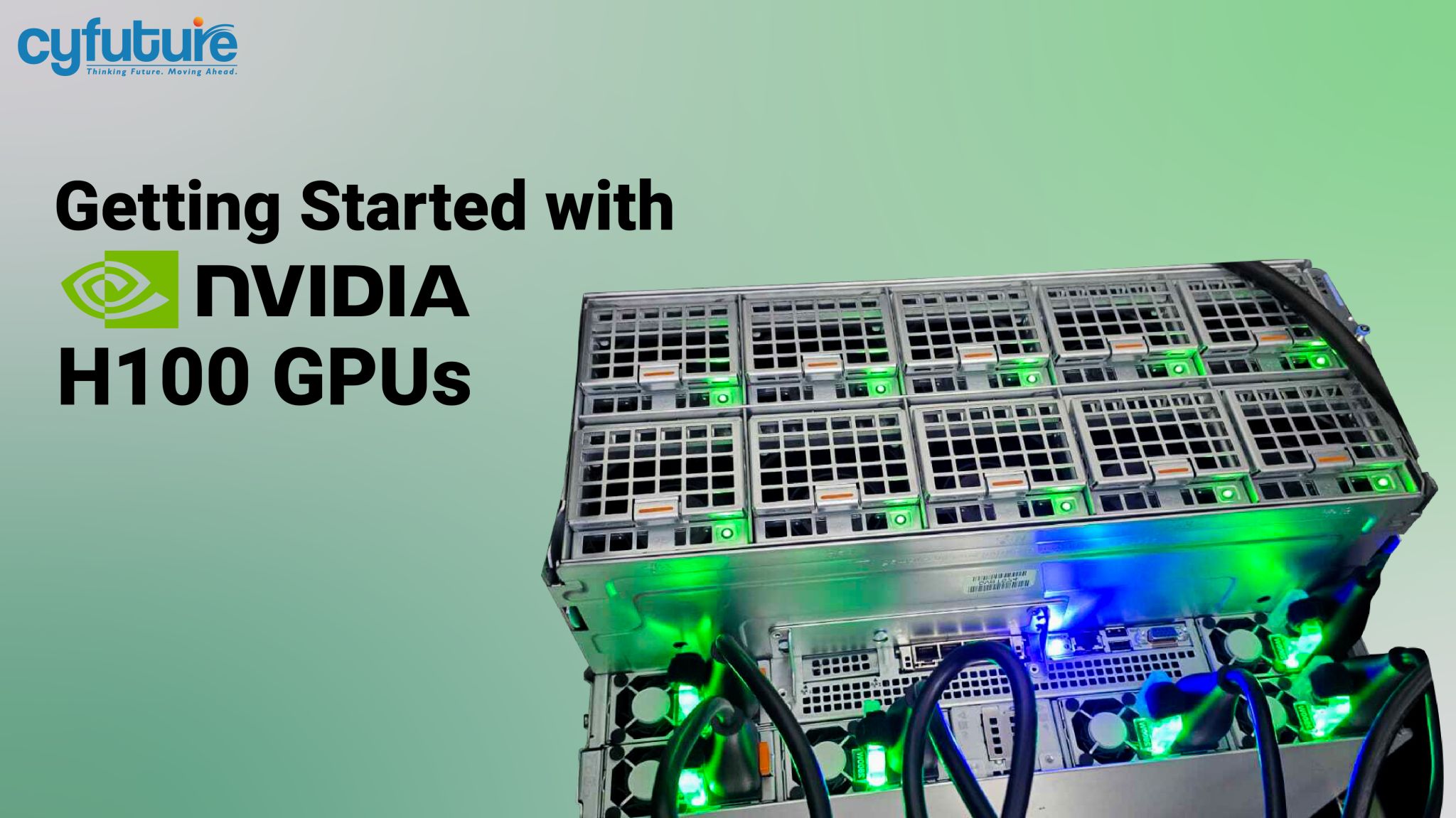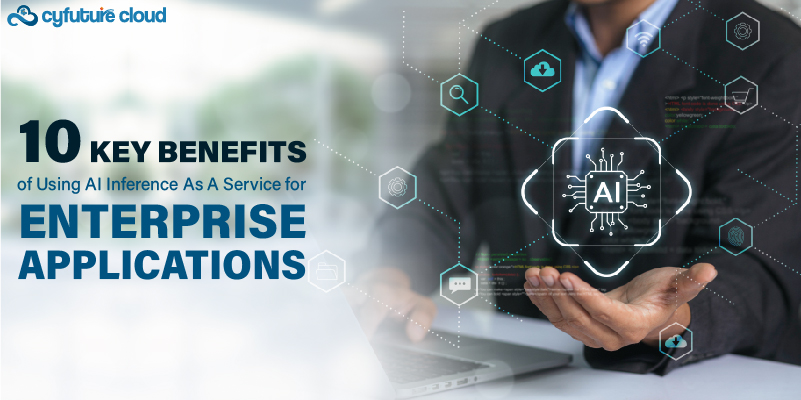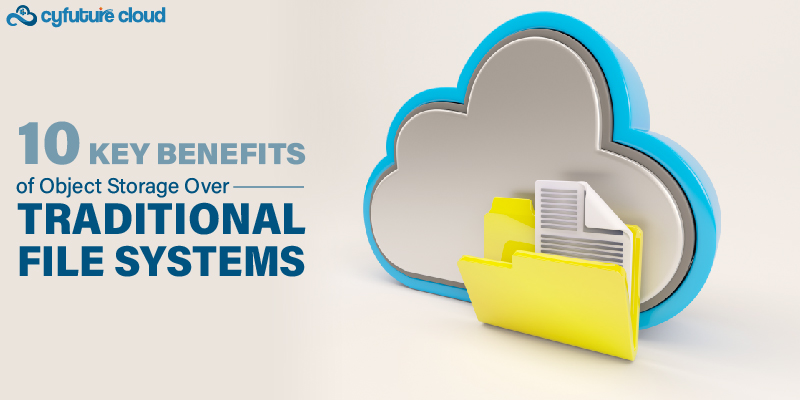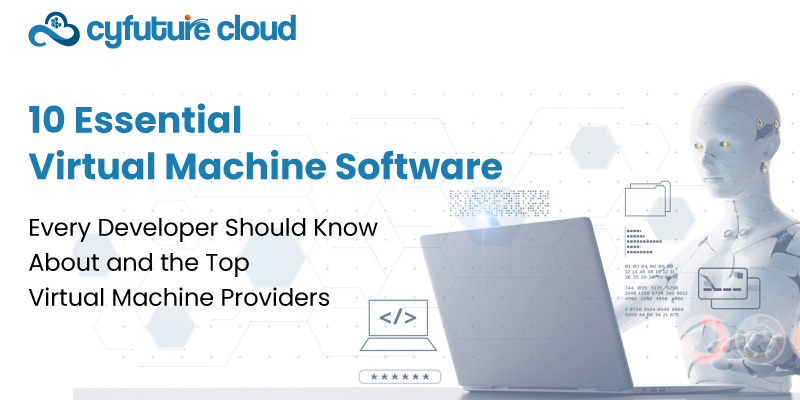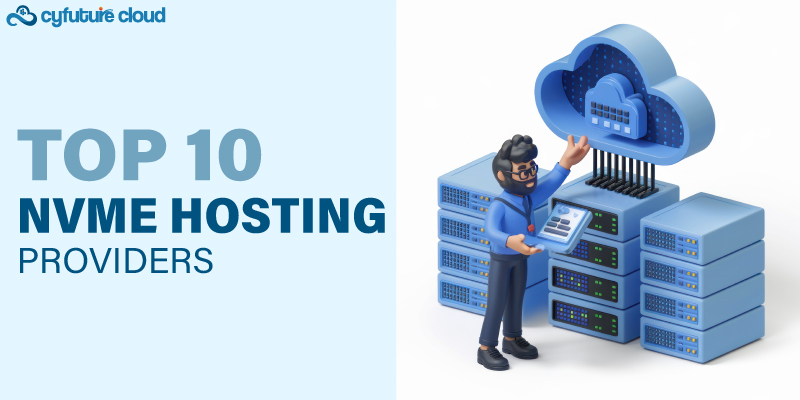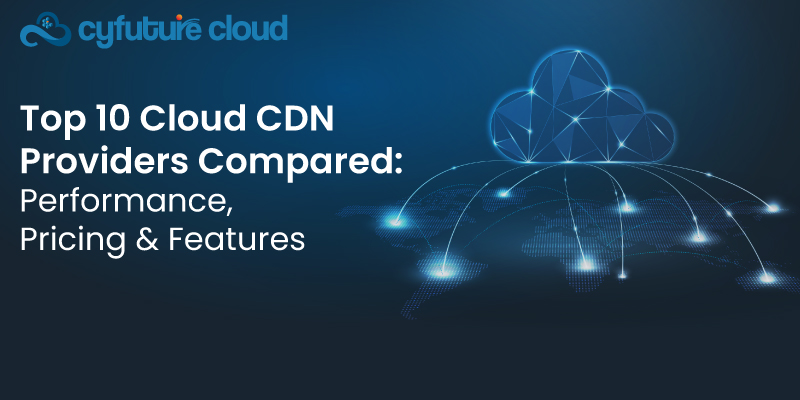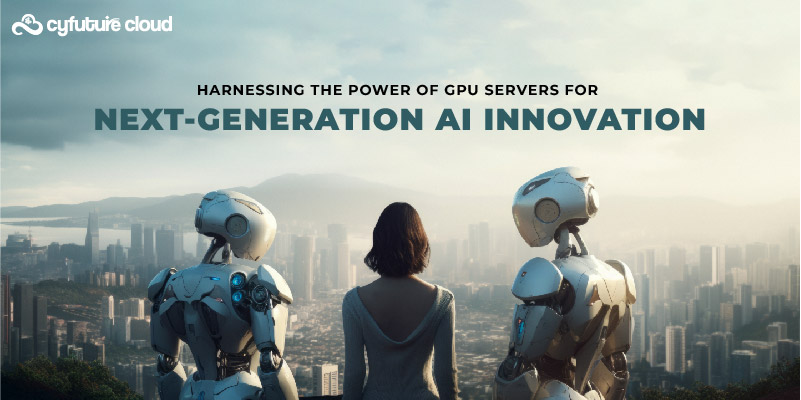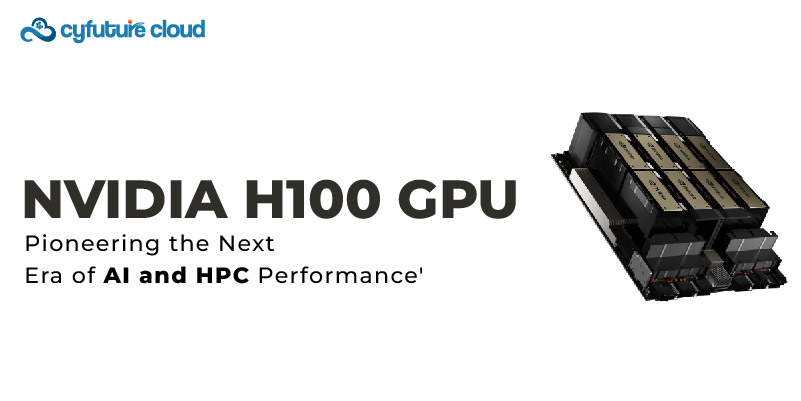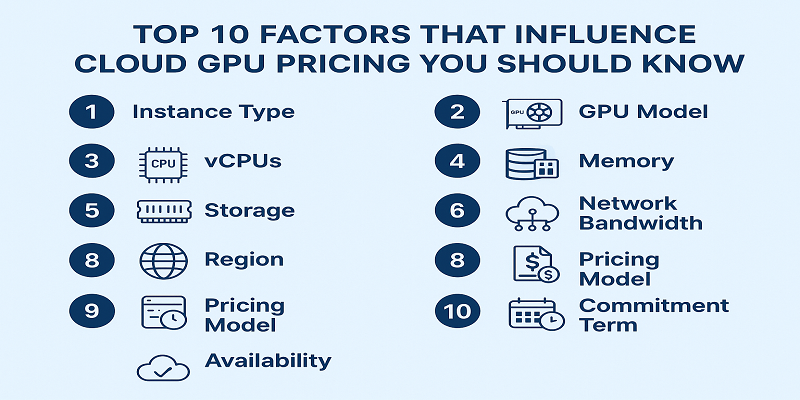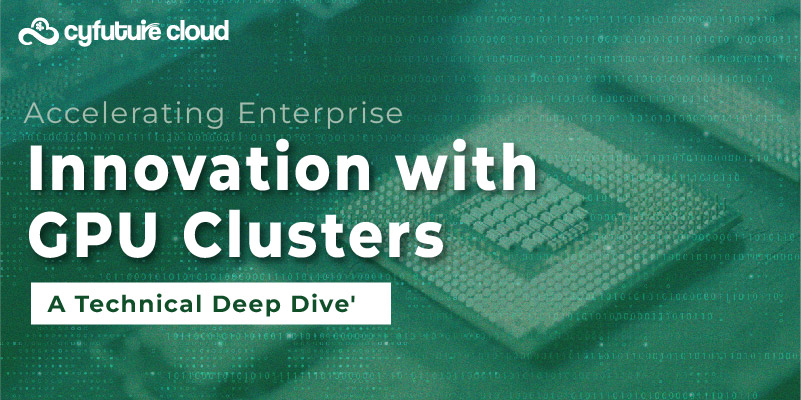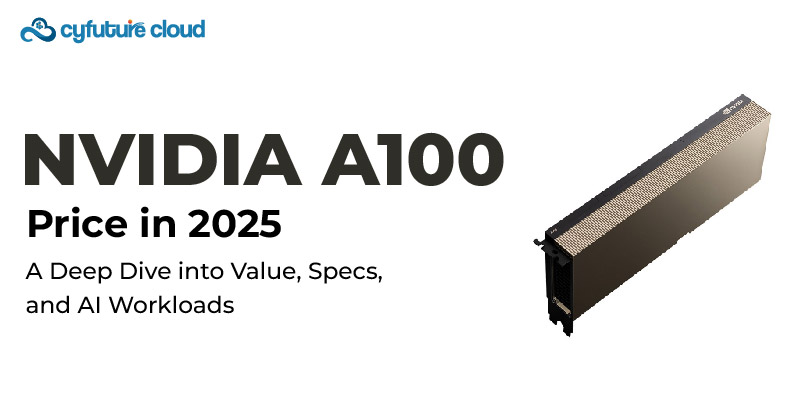Get 69% Off on Cloud Hosting : Claim Your Offer Now!
- Products
-
Compute
Compute
- Predefined TemplatesChoose from a library of predefined templates to deploy virtual machines!
- Custom TemplatesUse Cyfuture Cloud custom templates to create new VMs in a cloud computing environment
- Spot Machines/ Machines on Flex ModelAffordable compute instances suitable for batch jobs and fault-tolerant workloads.
- Shielded ComputingProtect enterprise workloads from threats like remote attacks, privilege escalation, and malicious insiders with Shielded Computing
- GPU CloudGet access to graphics processing units (GPUs) through a Cyfuture cloud infrastructure
- vAppsHost applications and services, or create a test or development environment with Cyfuture Cloud vApps, powered by VMware
- Serverless ComputingNo need to worry about provisioning or managing servers, switch to Serverless Computing with Cyfuture Cloud
- HPCHigh-Performance Computing
- BaremetalBare metal refers to a type of cloud computing service that provides access to dedicated physical servers, rather than virtualized servers.
-
Storage
Storage
- Standard StorageGet access to low-latency access to data and a high level of reliability with Cyfuture Cloud standard storage service
- Nearline StorageStore data at a lower cost without compromising on the level of availability with Nearline
- Coldline StorageStore infrequently used data at low cost with Cyfuture Cloud coldline storage
- Archival StorageStore data in a long-term, durable manner with Cyfuture Cloud archival storage service
-
Database
Database
- MS SQLStore and manage a wide range of applications with Cyfuture Cloud MS SQL
- MariaDBStore and manage data with the cloud with enhanced speed and reliability
- MongoDBNow, store and manage large amounts of data in the cloud with Cyfuture Cloud MongoDB
- Redis CacheStore and retrieve large amounts of data quickly with Cyfuture Cloud Redis Cache
-
Automation
Automation
-
Containers
Containers
- KubernetesNow deploy and manage your applications more efficiently and effectively with the Cyfuture Cloud Kubernetes service
- MicroservicesDesign a cloud application that is multilingual, easily scalable, easy to maintain and deploy, highly available, and minimizes failures using Cyfuture Cloud microservices
-
Operations
Operations
- Real-time Monitoring & Logging ServicesMonitor & track the performance of your applications with real-time monitoring & logging services offered by Cyfuture Cloud
- Infra-maintenance & OptimizationEnsure that your organization is functioning properly with Cyfuture Cloud
- Application Performance ServiceOptimize the performance of your applications over cloud with us
- Database Performance ServiceOptimize the performance of databases over the cloud with us
- Security Managed ServiceProtect your systems and data from security threats with us!
- Back-up As a ServiceStore and manage backups of data in the cloud with Cyfuture Cloud Backup as a Service
- Data Back-up & RestoreStore and manage backups of your data in the cloud with us
- Remote Back-upStore and manage backups in the cloud with remote backup service with Cyfuture Cloud
- Disaster RecoveryStore copies of your data and applications in the cloud and use them to recover in the event of a disaster with the disaster recovery service offered by us
-
Networking
Networking
- Load BalancerEnsure that applications deployed across cloud environments are available, secure, and responsive with an easy, modern approach to load balancing
- Virtual Data CenterNo need to build and maintain a physical data center. It’s time for the virtual data center
- Private LinkPrivate Link is a service offered by Cyfuture Cloud that enables businesses to securely connect their on-premises network to Cyfuture Cloud's network over a private network connection
- Private CircuitGain a high level of security and privacy with private circuits
- VPN GatewaySecurely connect your on-premises network to our network over the internet with VPN Gateway
- CDNGet high availability and performance by distributing the service spatially relative to end users with CDN
-
Media
-
Analytics
Analytics
-
Security
Security
-
Network Firewall
- DNATTranslate destination IP address when connecting from public IP address to a private IP address with DNAT
- SNATWith SNAT, allow traffic from a private network to go to the internet
- WAFProtect your applications from any malicious activity with Cyfuture Cloud WAF service
- DDoSSave your organization from DoSS attacks with Cyfuture Cloud
- IPS/ IDSMonitor and prevent your cloud-based network & infrastructure with IPS/ IDS service by Cyfuture Cloud
- Anti-Virus & Anti-MalwareProtect your cloud-based network & infrastructure with antivirus and antimalware services by Cyfuture Cloud
- Threat EmulationTest the effectiveness of cloud security system with Cyfuture Cloud threat emulation service
- SIEM & SOARMonitor and respond to security threats with SIEM & SOAR services offered by Cyfuture Cloud
- Multi-Factor AuthenticationNow provide an additional layer of security to prevent unauthorized users from accessing your cloud account, even when the password has been stolen!
- SSLSecure data transmission over web browsers with SSL service offered by Cyfuture Cloud
- Threat Detection/ Zero DayThreat detection and zero-day protection are security features that are offered by Cyfuture Cloud as a part of its security offerings
- Vulnerability AssesmentIdentify and analyze vulnerabilities and weaknesses with the Vulnerability Assessment service offered by Cyfuture Cloud
- Penetration TestingIdentify and analyze vulnerabilities and weaknesses with the Penetration Testing service offered by Cyfuture Cloud
- Cloud Key ManagementSecure storage, management, and use of cryptographic keys within a cloud environment with Cloud Key Management
- Cloud Security Posture Management serviceWith Cyfuture Cloud, you get continuous cloud security improvements and adaptations to reduce the chances of successful attacks
- Managed HSMProtect sensitive data and meet regulatory requirements for secure data storage and processing.
- Zero TrustEnsure complete security of network connections and devices over the cloud with Zero Trust Service
- IdentityManage and control access to their network resources and applications for your business with Identity service by Cyfuture Cloud
-
-
Compute
- Solutions
-
Solutions
Solutions
-
 Cloud
Hosting
Cloud
Hosting
-
 VPS
Hosting
VPS
Hosting
-
GPU Cloud
-
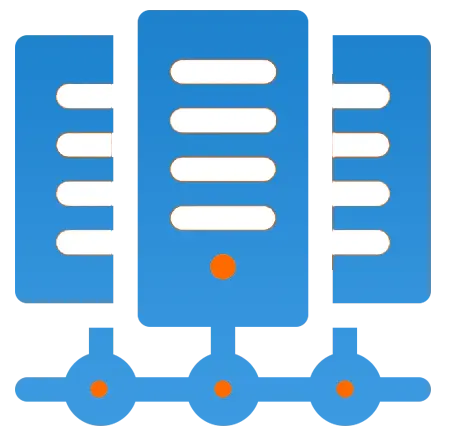 Dedicated
Server
Dedicated
Server
-
 Server
Colocation
Server
Colocation
-
 Backup as a Service
Backup as a Service
-
 CDN
Network
CDN
Network
-
 Window
Cloud Hosting
Window
Cloud Hosting
-
 Linux
Cloud Hosting
Linux
Cloud Hosting
-
Managed Cloud Service
-
Storage as a Service
-
 VMware
Public Cloud
VMware
Public Cloud
-
 Multi-Cloud
Hosting
Multi-Cloud
Hosting
-
 Cloud
Server Hosting
Cloud
Server Hosting
-
 Bare
Metal Server
Bare
Metal Server
-
 Virtual
Machine
Virtual
Machine
-
 Magento
Hosting
Magento
Hosting
-
Remote Backup
-
 DevOps
DevOps
-
 Kubernetes
Kubernetes
-
 Cloud
Storage
Cloud
Storage
-
NVMe Hosting
-
 DR
as s Service
DR
as s Service
-
-
Solutions
- Marketplace
- Pricing
- Resources
- Resources
-
By Product
Use Cases
-
By Industry
- Company
-
Company
Company
-
Company
How to Optimize Workloads Using NVIDIA H100 GPUs?
Table of Contents
- Understanding NVIDIA H100 GPU Performance
- Strategies to Optimize Workloads on NVIDIA H100
- Efficient Memory Utilization
- Leveraging Multi-Instance GPU (MIG) for Parallel Workloads
- Optimizing AI Model Performance with Tensor Cores
- Accelerating Large Language Model (LLM) Workloads
- Using CUDA, cuDNN, and Triton for Software Optimization
- Scaling Workloads with NVLink and NVSwitch
- Energy Efficiency Optimization
- Conclusion: Optimize Workloads with NVIDIA H100 on Cyfuture Cloud
Efficiency in high-performance computing (HPC) and artificial intelligence (AI) depends largely on optimizing workloads for the best possible performance. The NVIDIA H100 GPU, built on the Hopper architecture, is designed to handle demanding workloads, from deep learning to large-scale data analytics. However, simply upgrading to the H100 isn’t enough—proper optimization techniques ensure that you fully leverage its potential.
This guide explores how to optimize workloads using the NVIDIA H100 GPU. We’ll discuss memory management, workload distribution, AI model acceleration, and key software tools like CUDA, TensorRT, and Triton Inference Server. We’ll also compare different strategies and their impact on computational efficiency. Whether you’re running AI inferencing, scientific simulations, or cloud-based workloads, optimizing for the H100 can significantly reduce latency, lower costs, and boost productivity.
Let’s dive into the best practices for maximizing the performance of the NVIDIA H100 GPU.
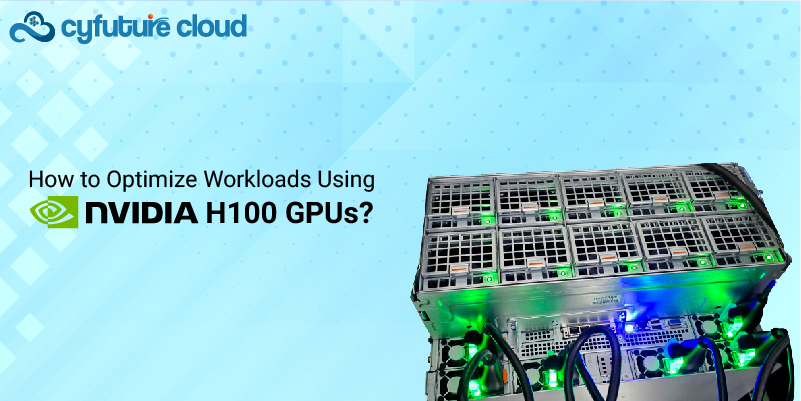
Understanding NVIDIA H100 GPU Performance
The NVIDIA H100, based on the Hopper architecture, is designed for extreme workloads. Before optimizing, it’s essential to understand its capabilities.
Key Features of NVIDIA H100
|
Feature |
Specification |
|
Architecture |
Hopper |
|
CUDA Cores |
16,896 |
|
Tensor Cores |
528 |
|
Memory |
80GB HBM3 |
|
Bandwidth |
3 TB/s |
|
NVLink Speed |
900 GB/s |
|
FP8 Tensor Performance |
4x Higher Than A100 |
|
Multi-Instance GPU (MIG) |
Up to 7 instances |
These features make the H100 ideal for AI/ML training, inferencing, and complex data processing tasks. Optimizing workloads ensures that these resources are utilized efficiently.
Strategies to Optimize Workloads on NVIDIA H100
Efficient Memory Utilization
The H100 features 80GB of HBM3 memory with 3TB/s bandwidth, making memory optimization crucial.
Techniques for Memory Optimization:
- Use Mixed Precision: H100 supports FP8, reducing memory usage while maintaining accuracy.
- Enable CUDA Unified Memory: Allows dynamic memory allocation across CPU and GPU.
- Optimize Memory Access Patterns: Align memory allocations to avoid cache thrashing.
- Use Memory Pools: CUDA memory pools reduce allocation overhead.
Leveraging Multi-Instance GPU (MIG) for Parallel Workloads
MIG allows partitioning the GPU into multiple instances, enabling parallel execution of different workloads.
|
Use Case |
Benefit |
|
Cloud AI inferencing |
Run multiple models on the same GPU |
|
Virtualized workloads |
Secure resource isolation |
|
Batch Processing |
Run multiple training jobs efficiently |
Optimization Tips for MIG:
- Assign different instances based on workload size.
- Use NVIDIA Triton Inference Server to handle multiple requests efficiently.
- Avoid underutilization by dynamically allocating resources.
Optimizing AI Model Performance with Tensor Cores
H100’s 528 Tensor Cores accelerate AI computations significantly.
Steps to Optimize AI Workloads:
- Convert models to FP8 precision for faster processing.
- Use TensorRT to optimize deep learning models.
- Enable automatic mixed precision (AMP) in frameworks like PyTorch and TensorFlow.
Example Performance Boost:
|
Model Type |
FP32 Performance |
FP16 Performance |
FP8 Performance |
|
ResNet-50 |
2.1 TFLOPS |
4.2 TFLOPS |
8.4 TFLOPS |
|
GPT-3 |
1.5 TFLOPS |
3.0 TFLOPS |
6.0 TFLOPS |
Accelerating Large Language Model (LLM) Workloads
H100 is ideal for large-scale LLM training and inferencing.
Best Practices for LLM Optimization:
- Use FasterTransformer for GPT and BERT models.
- Leverage NVLink for multi-GPU scaling.
- Enable ZeRO Offloading in DeepSpeed to optimize memory usage.
Using CUDA, cuDNN, and Triton for Software Optimization
NVIDIA provides multiple software tools to improve H100 performance.
CUDA & cuDNN Optimization:
- Use CUDA Graphs to reduce kernel launch overhead.
- Optimize tensor operations with cuDNN.
- Use shared memory for frequently accessed data.
Using Triton Inference Server:
Triton enables real-time AI inference across multiple frameworks. Benefits include:
- Dynamic model batching.
- Concurrent execution of different models.
- Automatic model versioning for continuous deployment.
Scaling Workloads with NVLink and NVSwitch
For large-scale training, multiple H100 GPUs can be interconnected using NVLink and NVSwitch.
Advantages of NVLink/NVSwitch:
- Direct GPU-to-GPU communication at 900GB/s.
- Reduced latency compared to PCIe.
- Scalable AI training on multiple GPUs.
NVLink Speed Comparison:
|
Communication Method |
Bandwidth |
|
PCIe 4.0 |
64 GB/s |
|
NVLink |
900 GB/s |
Energy Efficiency Optimization
Reducing power consumption is essential for cost-effective operations.
Techniques:
- Enable Power Management APIs in CUDA.
- Use NVIDIA-smi to monitor and limit power usage.
- Optimize cooling to prevent thermal throttling.
Conclusion: Optimize Workloads with NVIDIA H100 on Cyfuture Cloud
NVIDIA H100 GPUs offer unmatched performance for AI, HPC, and cloud workloads, but maximizing their potential requires careful optimization. By leveraging advanced memory management, Tensor Cores, MIG, NVLink, and software tools like Triton and CUDA, businesses can significantly improve efficiency.
To get the best performance without the hassle of hardware management, Cyfuture Cloud provides NVIDIA H100-powered cloud computing solutions tailored for AI, ML, and HPC workloads. With scalable infrastructure, optimized GPU cloud instances, and expert support, Cyfuture Cloud ensures your workloads run at peak efficiency.
Ready to accelerate your AI workloads? Deploy NVIDIA H100 on Cyfuture Cloud today!

Stay Ahead of the Curve.
Join the Cloud Movement, today!
© Cyfuture, All rights reserved.
Send this to a friend

 Pricing
Calculator
Pricing
Calculator
 Power
Power
 Utilities
Utilities VMware
Private Cloud
VMware
Private Cloud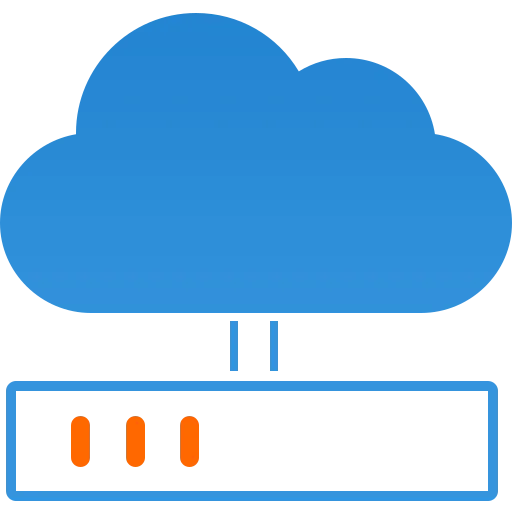 VMware
on AWS
VMware
on AWS VMware
on Azure
VMware
on Azure Service
Level Agreement
Service
Level Agreement 